Our Blog - Museum Narbonne Via, Narbonne, France
There are several museums in Narbonne for the Roman antiquities found here. We had visited the Horreum and underground galleries last year during our beach trip, and most of the city of Narbonne in 2021. This year, we decided to check out the newest museum, called Narbonne Via, that was just opened in May of 2021. I have to admit, the technology that was used in this museum is pretty cool. It is located on the fringe of Narbonne, but it was a short drive from where we were staying. And lucky for us, it was Free-Museum-Sunday (1st Sunday of each month)!
When you first enter, you are immediately hit with this huge "stone wall" that extends the length of the building. These blocks are what remain of the architectural fragments of Roman buildings, and more particularly funerary mausoleums. There are a few really interesting things here. First, these were "reused" during the Renaissance, under order of the King François I of France, being inserted in the gates of the city wall as well as used to build houses and churches. So you would enter the city through a gate and you may not realize that you were going under a Roman stone. When the walls were demolished between 1868 and 1884, this collection of stones was brought together, called the Lapidary collection. The second interesting part is the 3D software that you can use to get a close-up view of a set of these, along with being able to turn the entire stone around (I'll show pictures of this later).



This block is decorated with a plant frieze, with a long stem and scrolling leaves. This type of decoration is typical of Corinthian buildings, and the entire length of the façade of the building would have these blocks. It is carved from limestone and dates to the late 1st century AD.


Also from the 1st century in limestone, the figure on this block wears a tunic with fitted sleeves and legs and a soft cap. This is thought to be a representation of a "barbarian" servant.

A few more quite interesting ones ...


So now, a look at the technology ... first, the actual stone. On a large screen (which you can have in French, English, or Spanish), you have information on the stone, in this case, a Funerary inscription of Publius Attius Midas, from the 1st century AD in limestone. It is engraved on a curved block which suggests that it came from a circular monument. It is the epitaph of a former slave, named Publius Attius Midas, that was erected by another slave named Publius Attius Venustus. These 2 men were slaves of a man named Publius Attius, who freed them. The next 2 pictures are of the screen, where I have been able to turn the 3D rendering of the stone around to the right, and then to the left. I was able to turn it all the way around and see the back as well. Pretty cool!
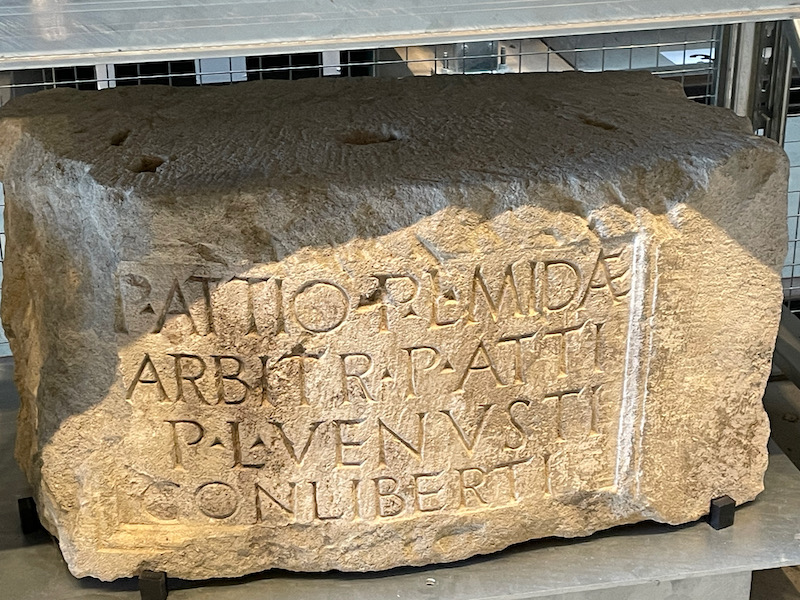
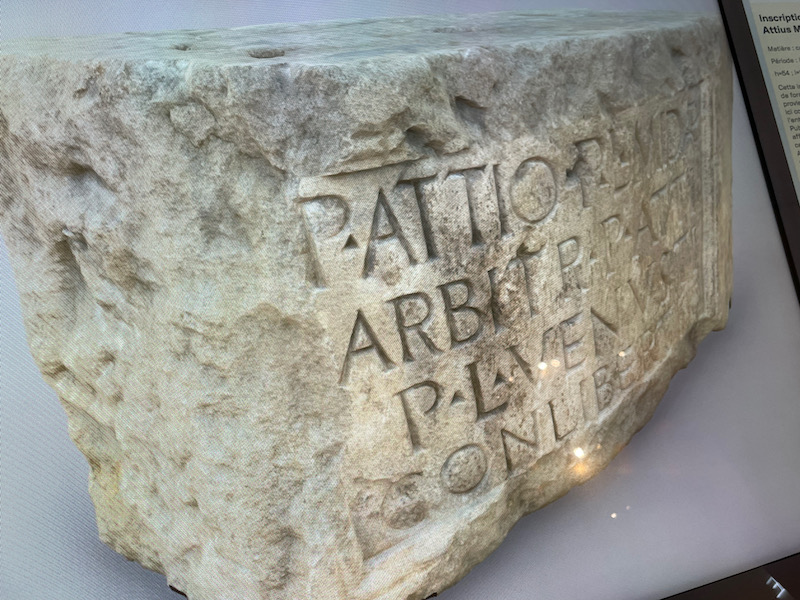
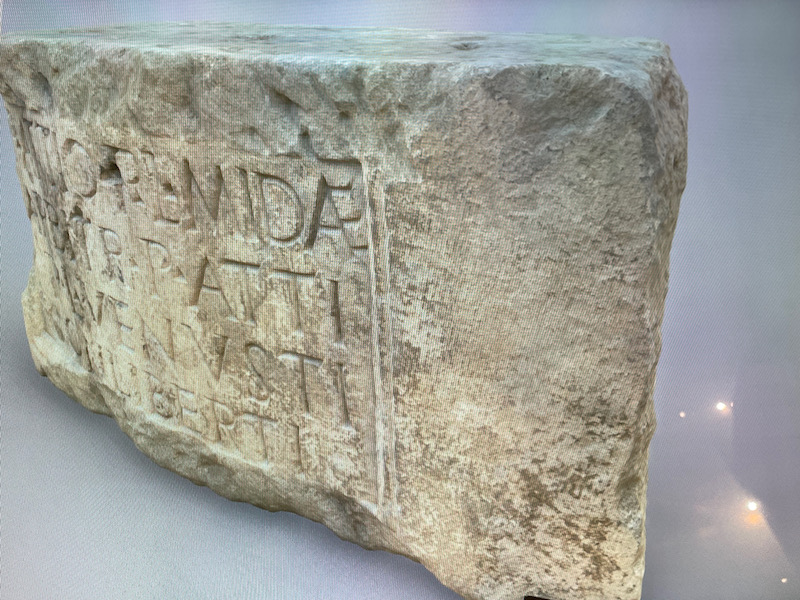
The Roman city of "Narbo Martius" is a typically Roman/Italian city. Its center is made up of Roman-style town with a network of perpendicular streets with the main Roman public buildings (none of which have survived) including a forum, an amphitheater, temples, and thermal baths. Narbonne was dominated by the Capitoline temple, built during the reign of Augustus, dedicated to the gods Jupiter, Minerva and Juno. Some of the marble fragments from the temple were found at the end of the 19th century under a school. There were a set of excavations done and the museum has a 3D rendering of what it is believed to have looked like based on the fragments.
Some of these pieces are still in amazing shape, even after all these years. This is one of a pair of Corinthian-style capitals dating from the first half of the 2nd century AD.
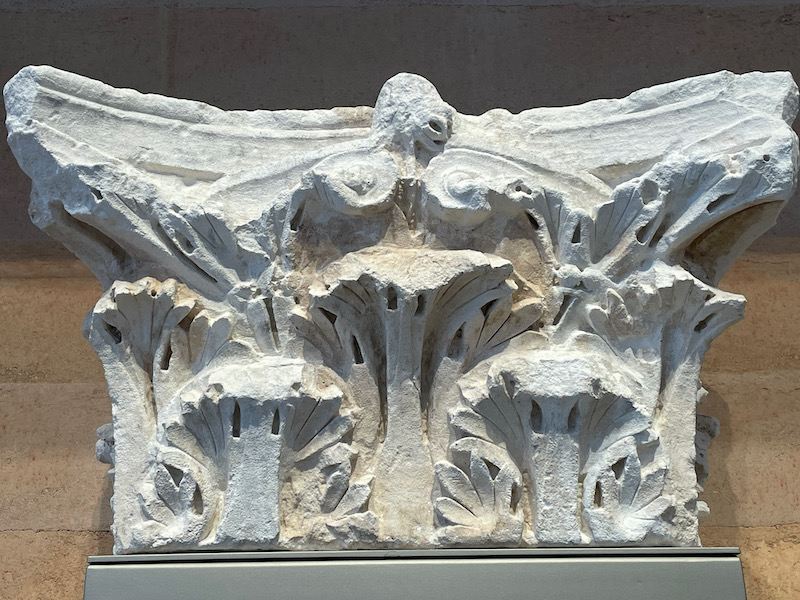
You can see the two capitals behind this piece, which is part of a frieze from the late 1st century, done in marble. It has ox skulls with garlands of fruit and flowers, which was quite common in the time of Augustus, and alludes to the sacrifice of oxen during religious ceremonies. And then the reuse ... the block as turned around and reused in modern times ... with 3 coats-of-arms of the consuls of Narbonne carved into the stone on the reverse side.
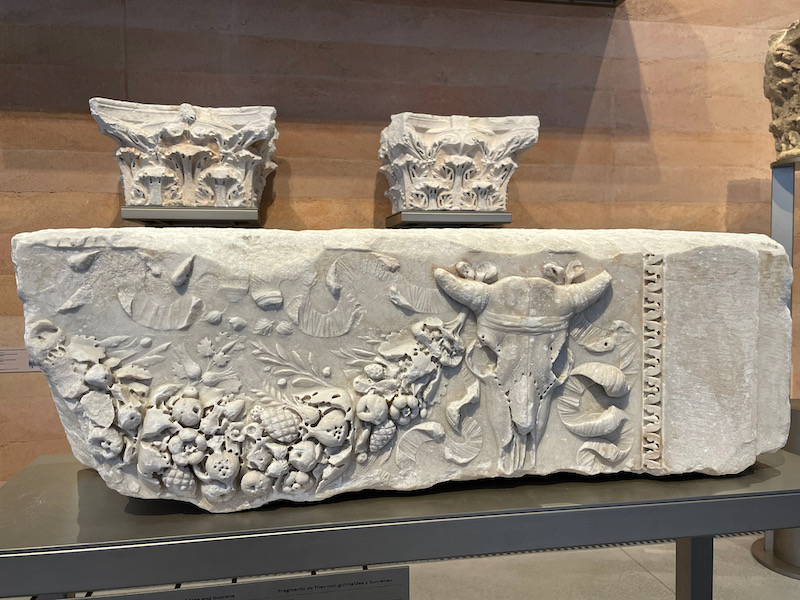
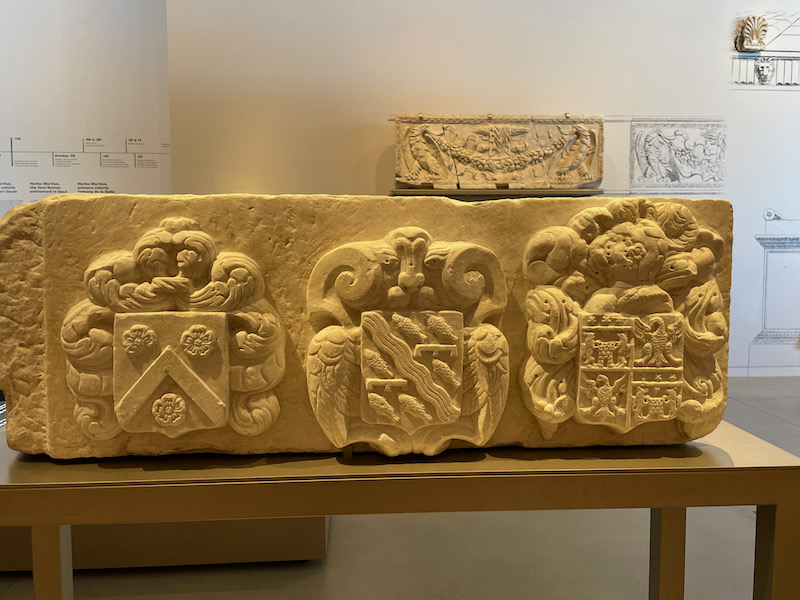
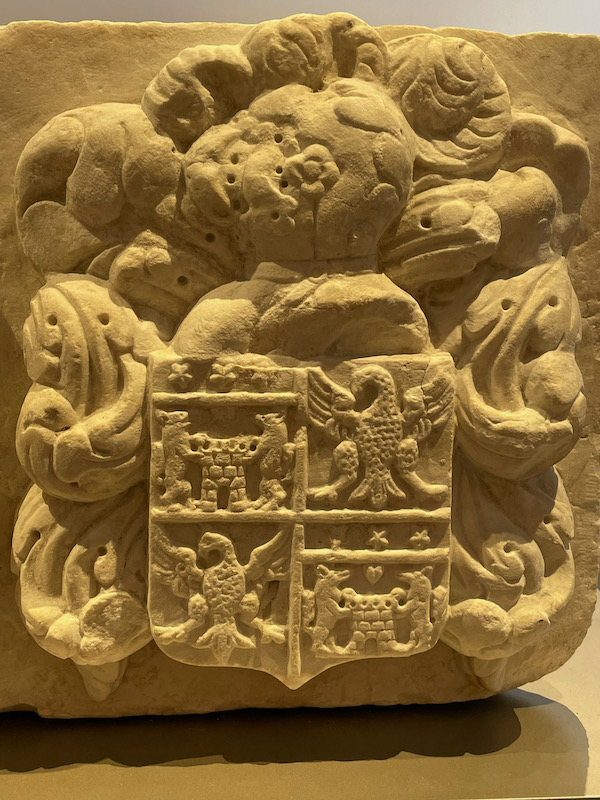
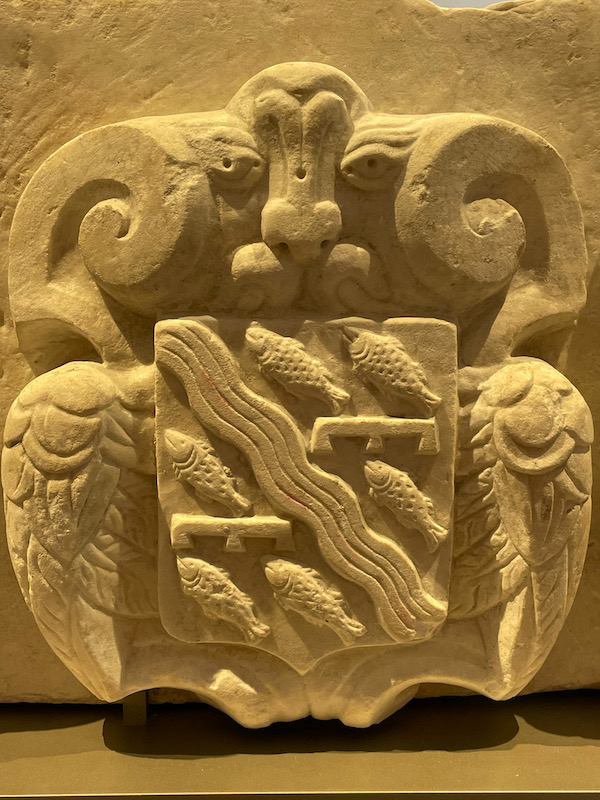
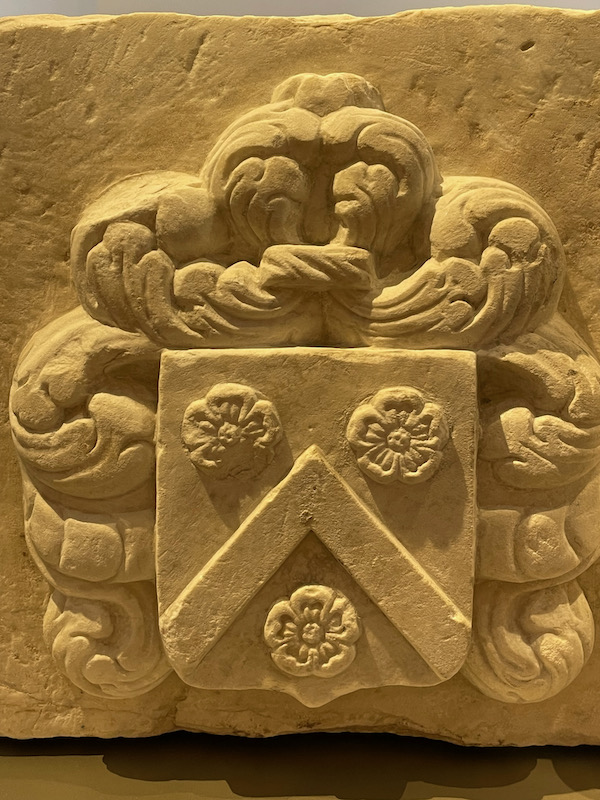
Dating from 161 AD, this is a marble bust of Emperor Lucius Verus. Lucius Aurelius Verus was a co-emperor from 161 until his death in 169, alongside his adoptive brother Marcus Aurelius (if you remember the movie Gladiator, the Russel Crowe character was a confidant of Marcus Aurelius). Similar to busts that are in the Louvre and the NY Met Museum, this one also shows him with thick, curly hair and a full beard.

Another section in the museum details the excavations at Clos de la Lombarde, which was found in 1973 when a new tax office was being constructed. Over the next 30 years, the excavations found a small cluster of houses surrounded by four streets, nicknamed “little French Pompeii". The houses date from the 1st century BC to the 3rd century AD, before the area was abandoned and then a Palaeochristian basilica was built there in the end of the 4th century. They have a model of what the houses looked like, which includes various rooms surrounding a central courtyard.
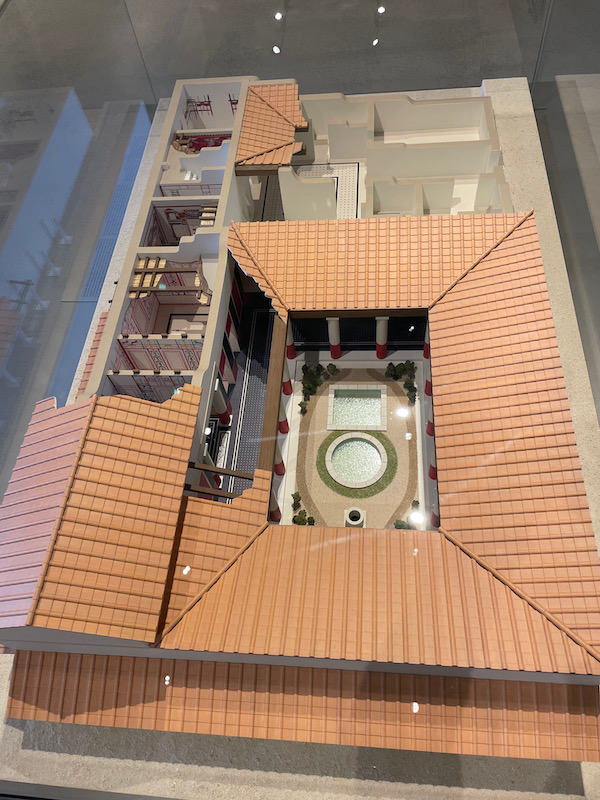
That central courtyard, called the atrium, was open and allowed rainwater to collect in a basin. In the rooms surrounding this atrium, various mosaics, paintings, and artifacts have been found. This mosaic, dating from the 2nd or early 3rd century AD, has a central medallion showing Bacchus, the god of wine.
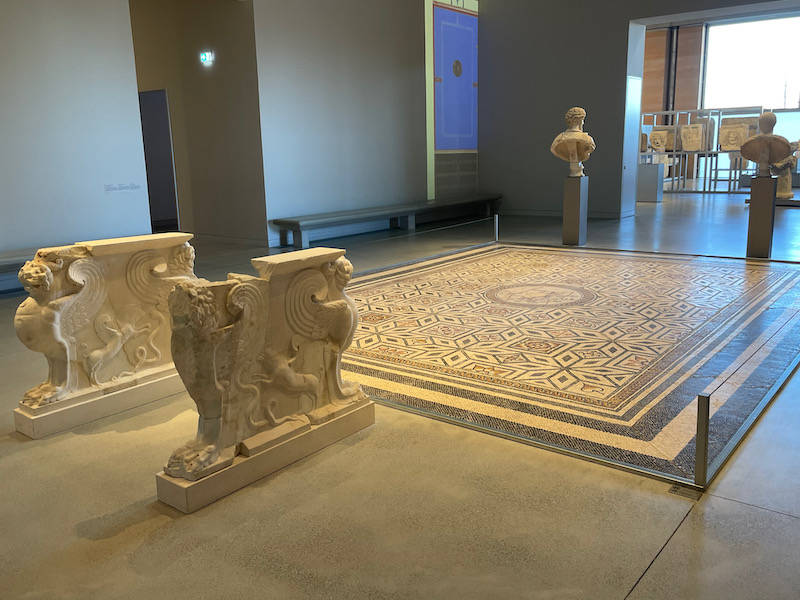

The dining room from a house called "The Portico" has painted decorations dating from the beginning of the 3rd century. You can see a man, holding a horn of plenty on one side and a bowl in the other, with a winged Victory (you can really only see the wings of the Victory). The various iconography would indicate the owner of this house was perhaps a magistrate. The details on the sandals are quite nice.
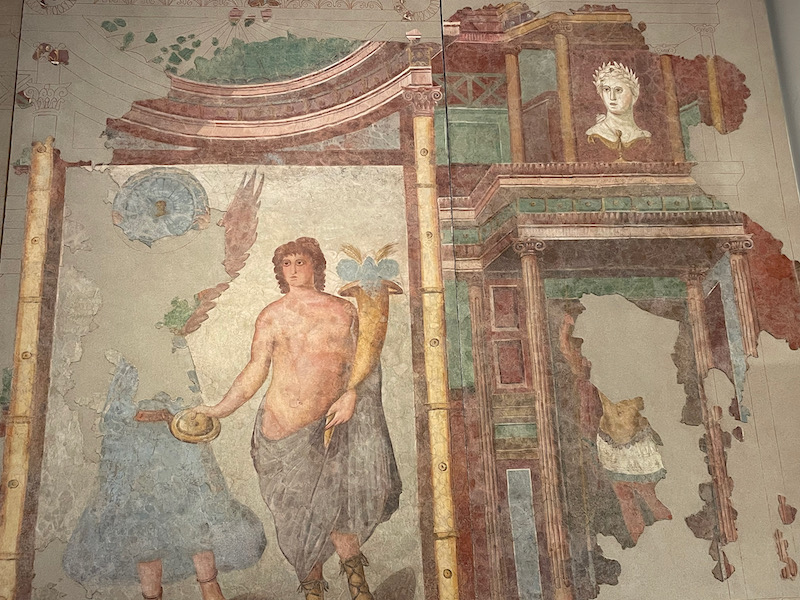

While this isn't in great shape, these are piece of painted plaster from the 2nd century AD which would have been on the walls of a living room or office. The 2nd picture, from a different room, shows panels on a white background. Within the individual squares are various things ... a squirrel, a theater mask, birds in a window.


This is a mosaic from the house, which would have decorated a living room. It has a black background with inlaid multi-colored stones. You can also see most of the border that would have gone all around it (at the bottom).

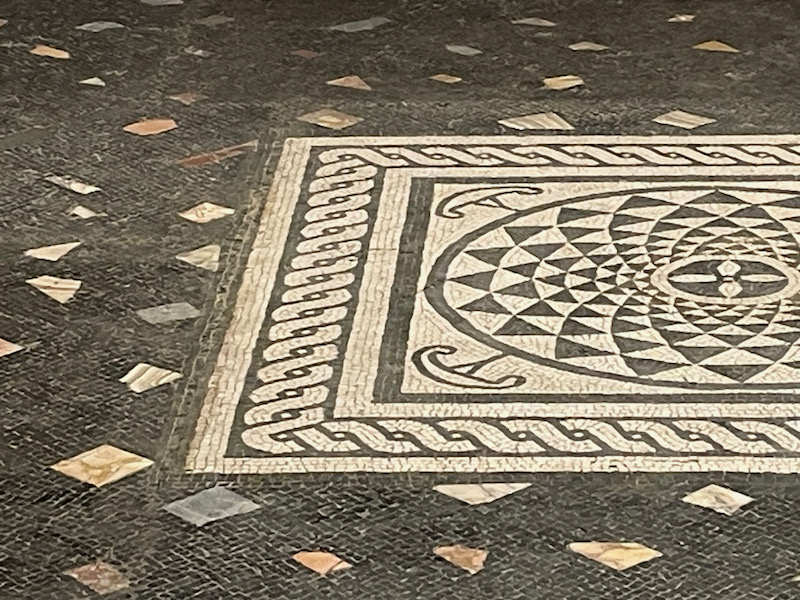
Last thing from the house is another mosaic, this was done in the 1st century BC, which was found in the oldest known house from the Roman city. Here we have two griffins face each other on either side of a cup.

There is also a section that talks about death rituals, both before and after Christianity. The Romans had a necropolis nearby and there are quite a few funerary stele in the museum. This marble sarcophagus is from the 2nd century AD, and shows a mythological scene with winged "people" participating in a grape harvest. This scene refers to the cult of the wine god Bacchus, which was important in Roman times.
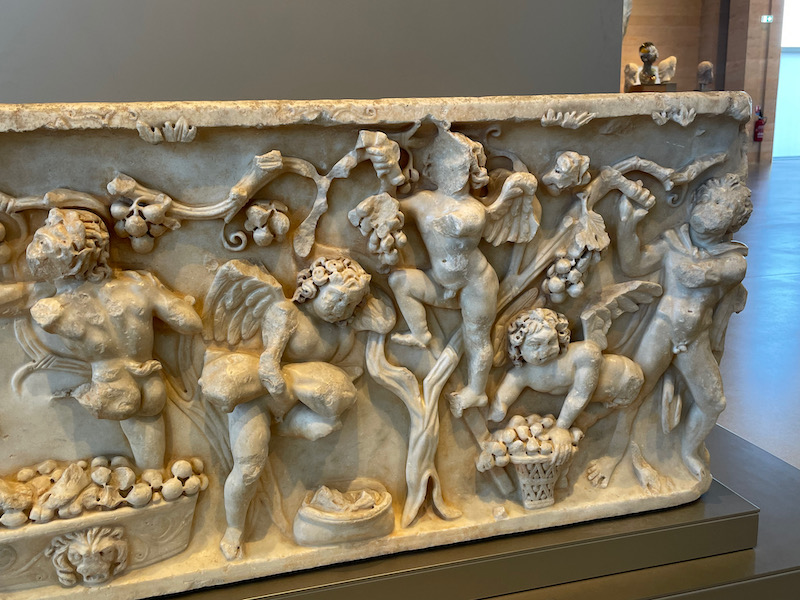

From the 1st half of the 1st century AD is this limestone funeral stele of a baker named Marcus Careieus Asisa. The scene above the writing shows his profession, with a mule operating a rotating grinder to mill flour on the left, and a domestic altar on the right. Below the altar on the right is the baker's dog wearing a bell.

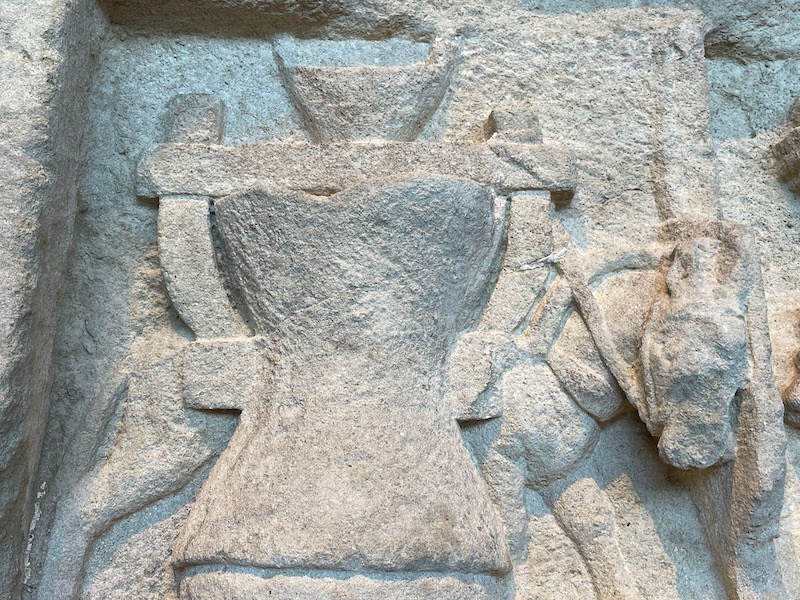
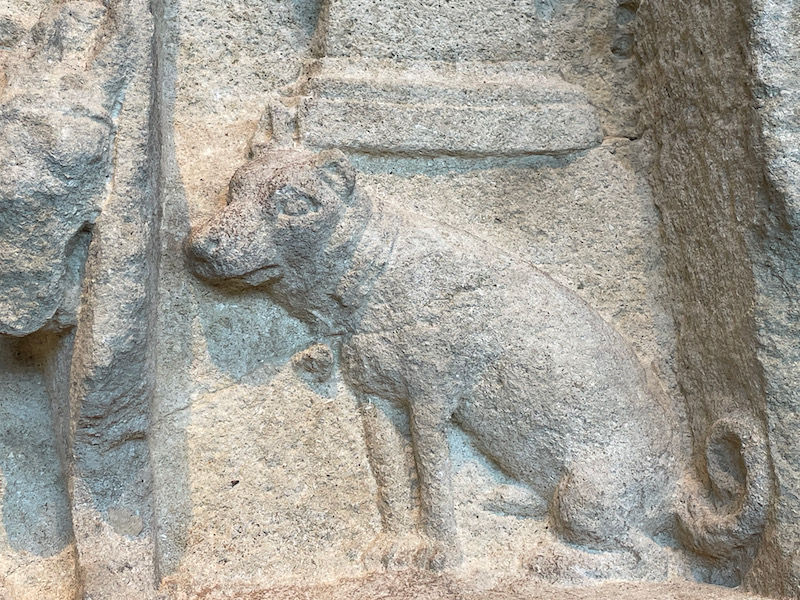
With the Roman Empire in decline starting from the 3rd century AD, the Roman city of Narbo Martius gradually declined as well. There was a gradual increase in Christianity through the Roman empire and the city itself would be eventually taken over by the Visigoths in 462. The Roman public buildings were mostly demolished and several churches were built. Eventually, the majority of the inhabitants converted to Christianity and this change was reflected in the inscriptions and sarcophagi which started having Christian iconography and scenes from the Gospels. This 4th century marble sarcophagus with a prayer wheel in the center and a female figure holding her hands open in front of her. There are also figures from the Old and New Testaments.

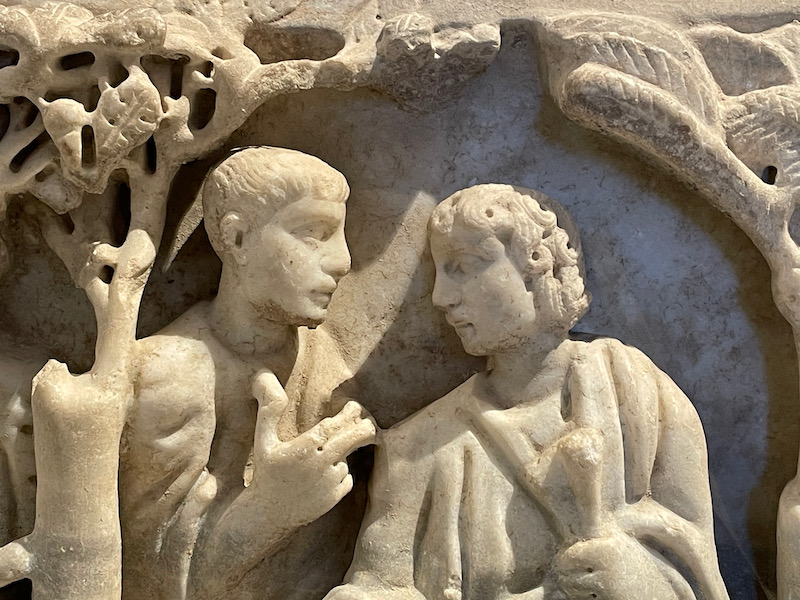
Another 4th century marble sarcophagus depicts scenes from the life of Christ. On the left, Jesus hals the blind Bartimaeus, and then the next scene has Saint Peter with a rooster.
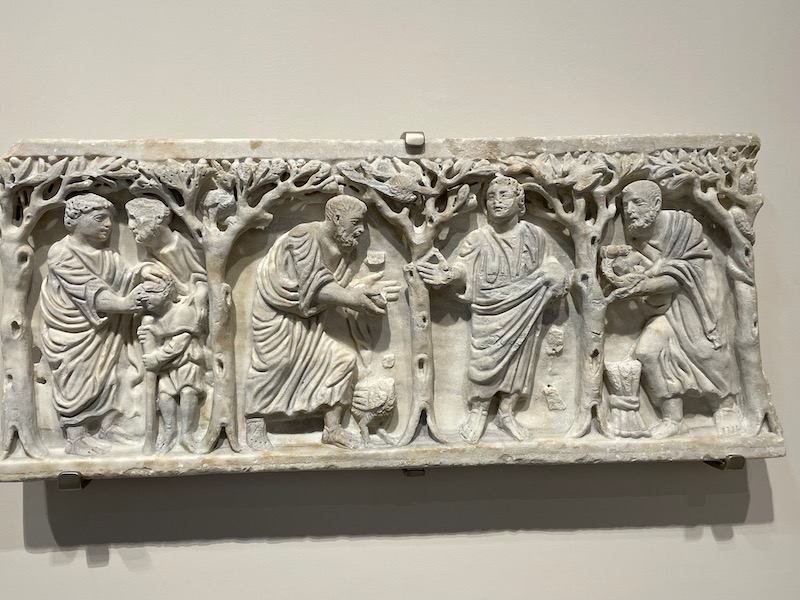
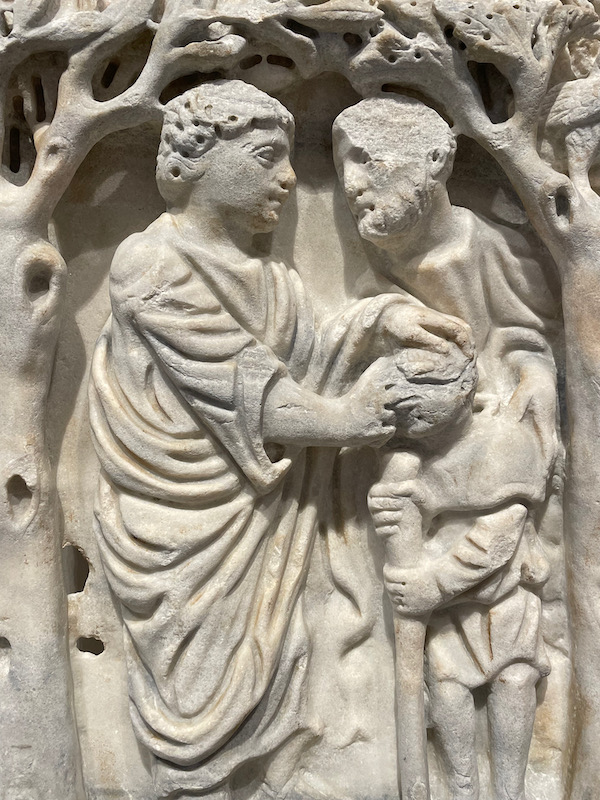
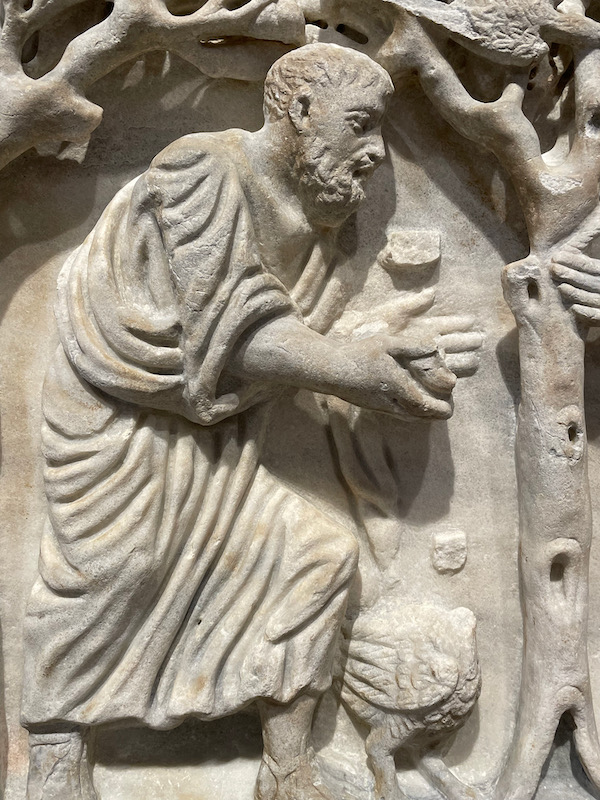
We only did a quick view around and plan to come back again on our next trip to the Narbonne Plage, especially if we can plan it on a Free-Museum-Sunday!